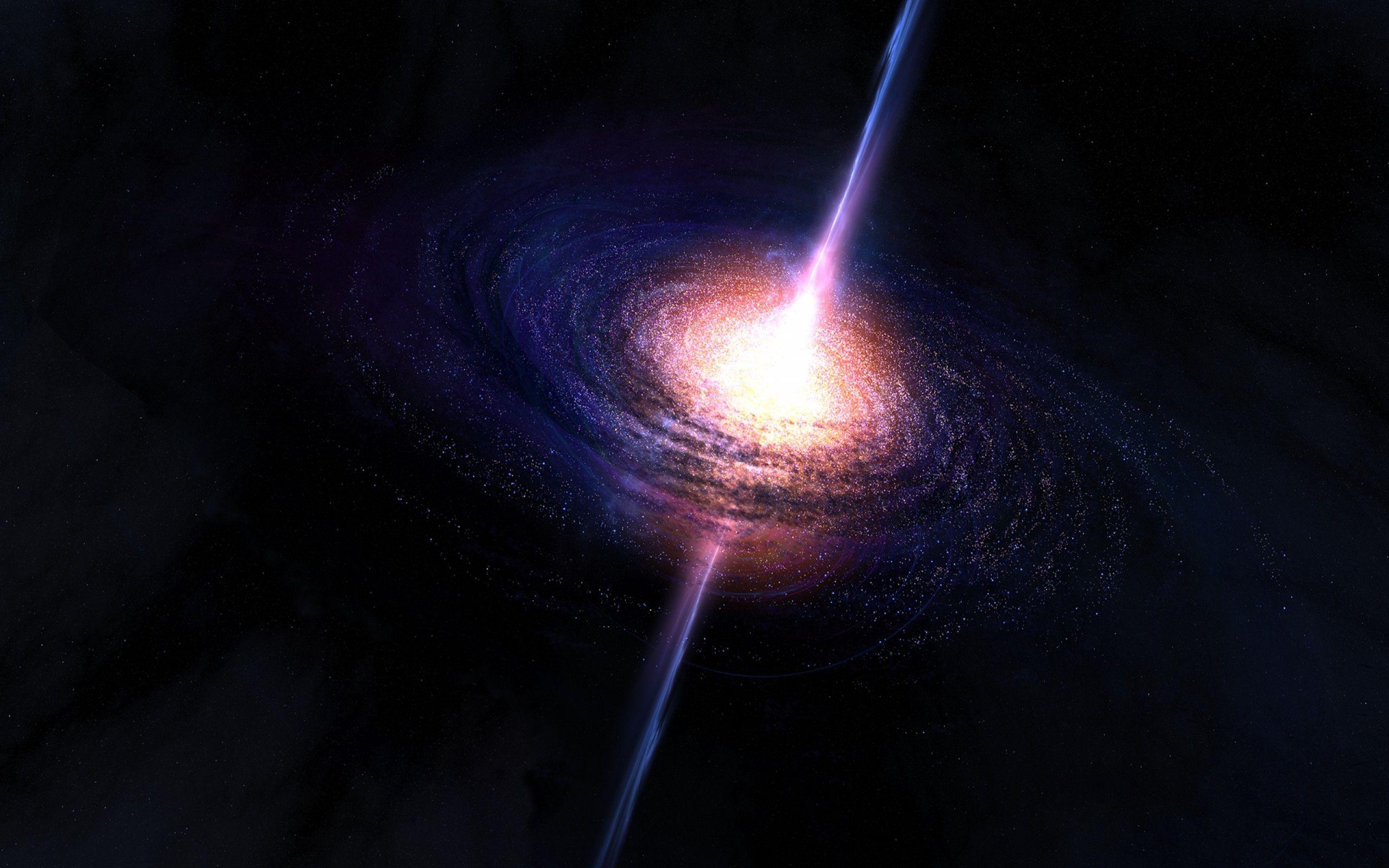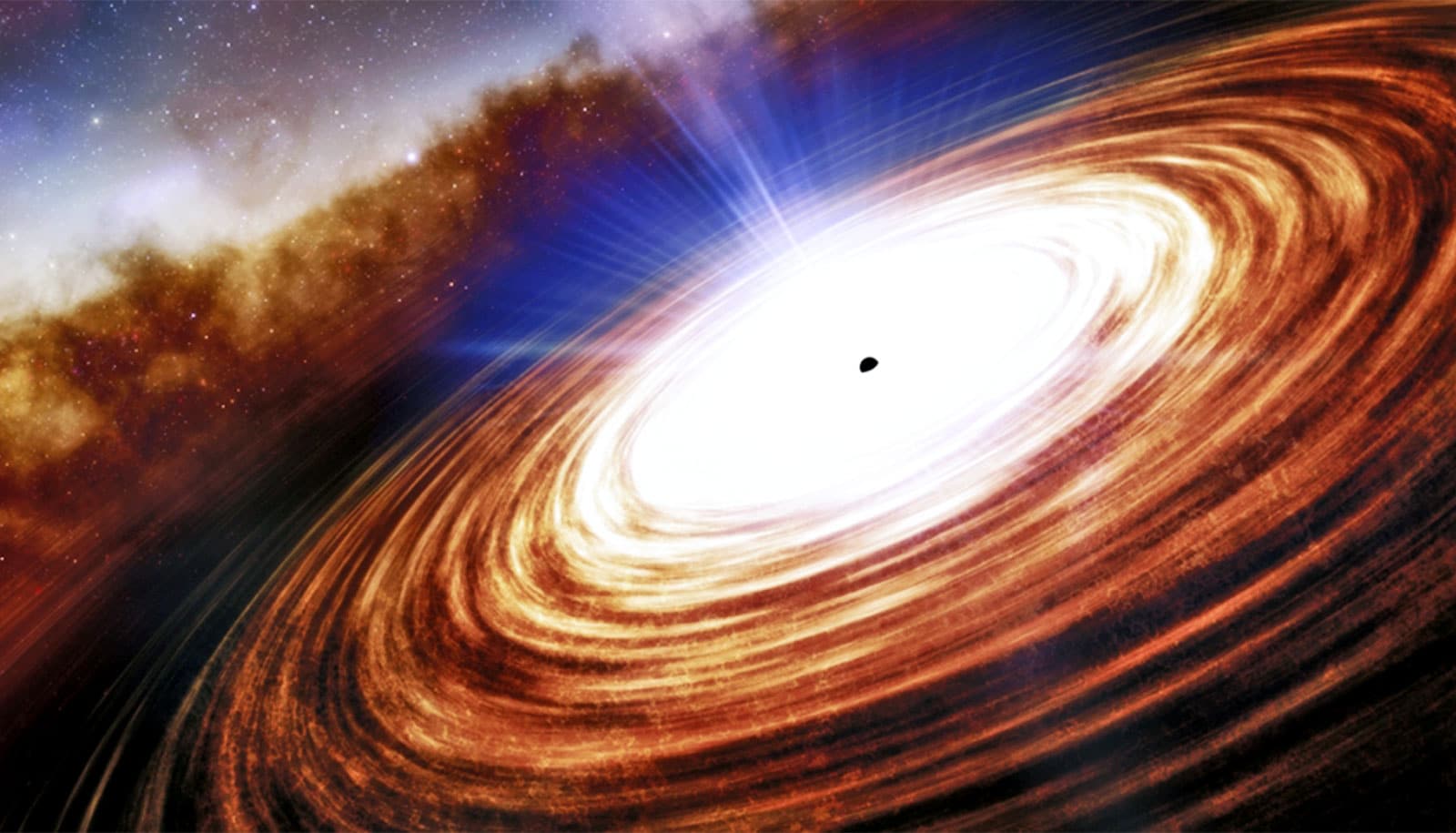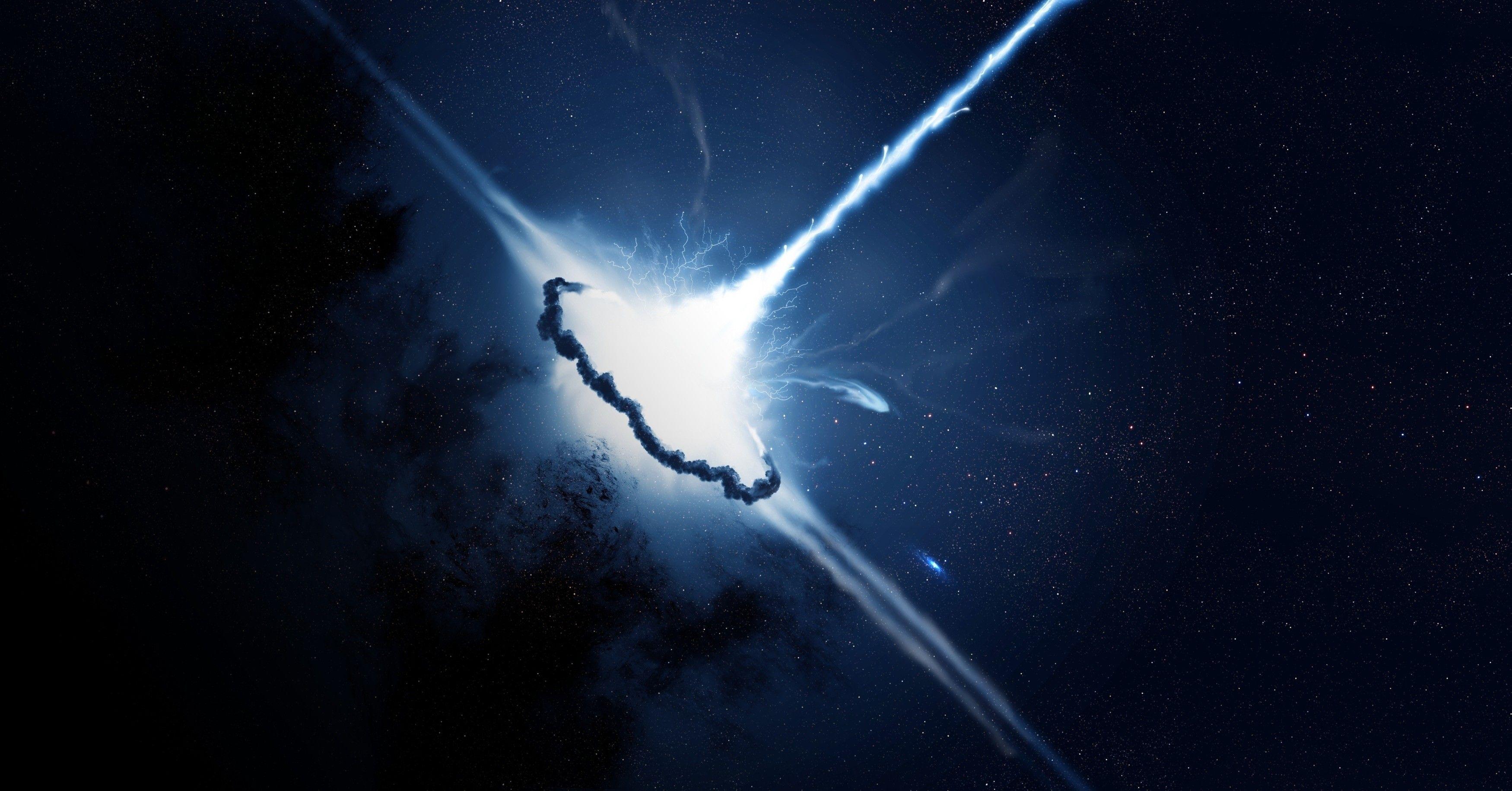
In the X-ray band, quasars vary even more rapidly, so the light travel time argument tells us that this more energetic radiation is generated in an even smaller region. For quasars, the emission in visible light varies on typical time scales of 5 to 2000 days, limiting the size of the disk to that many light-days. If we assume that the energy emitted by quasars is also produced by a hot accretion disk, then, as we saw in the previous section, the size of the disk must be given by the time the quasar energy takes to vary. We already know from observations (discussed in Black Holes and Curved Spacetime) that an accreting black hole is surrounded by a hot accretion disk with gas and dust that swirl around the black hole before it falls in. In order to prove that a black hole is present at the centre of a galaxy, we must demonstrate that so much mass is crammed into so small a volume that no normal objects-massive stars or clusters of stars-could possibly account for it (just as we did for the black hole in the Milky Way). Direct link: Observational Evidence for Black Holes Watch a video of an artist’s impression of matter accreting around a supermassive black hole. If the mass of the black hole is smaller than a billion solar masses or the accretion rate is low, then the amount of energy emitted can be much smaller, as it is in the case of the Milky Way. This is enough to account for the total energy of a quasar. If a black hole with a billion Suns’ worth of mass inside (10 9 M Sun) accretes (gathers) even a relatively modest amount of additional material-say, about 10 M Sun per year-then (as we shall see) it can, in the process, produce as much energy as a thousand normal galaxies. The amount of energy emitted by material near the black hole depends on two things: the mass of the black hole and the amount of matter that is falling into it. The evidence now shows that most-and probably all-elliptical galaxies and all spirals with nuclear bulges have black holes at their centres. While our black hole doesn’t have the mass or energy of the quasar black holes, the mechanism that powers them is similar. As we saw in The Milky Way Galaxy, our own Galaxy has a black hole in its centre, and the energy is emitted from a small central region. It was only as proof of the existence of black holes accumulated over several decades that it became clearer that only supermassive black holes could account for all the observed properties of quasars and AGNs. Back when astronomers first began trying to figure out what powered quasars, black holes were simply one of the more exotic predictions of the general theory of relativity that still waited to be connected to the real world. Proof that there is a black hole at the centre of our own Galaxy came even later. The discovery of the first stellar mass black hole in the binary system Cygnus X-1 was announced in 1971, several years after the discovery of quasars.


That’s because the key idea in solving the puzzle came from observations of the black holes. The readers of this text are in a much better position than the astronomers who discovered quasars in the 1960s to guess what powers the quasars. That means they must have been able to form in the first billion years or so after the universe began to expand. As we shall see later in this chapter, quasars were much more common when the universe was young than they are today.Because quasars put out so much power from such a small region, they can’t be powered by nuclear fusion the way stars are they must use some process that is far more efficient.These jets are themselves powerful sources of radio and gamma-ray radiation. Some quasars are observed to be shooting out pairs of straight jets at close to the speed of light, in a tight beam, to distances far beyond the galaxies they live in.Quasars are tiny, about the size of our solar system (to astronomers, that is really small!).


Explain how a quasar’s energy is produced.Justify the claim that supermassive black holes are the source of the energy emitted by quasars (and AGNs).Describe the characteristics common to all quasars.By the end of this section, you will be able to:


 0 kommentar(er)
0 kommentar(er)
